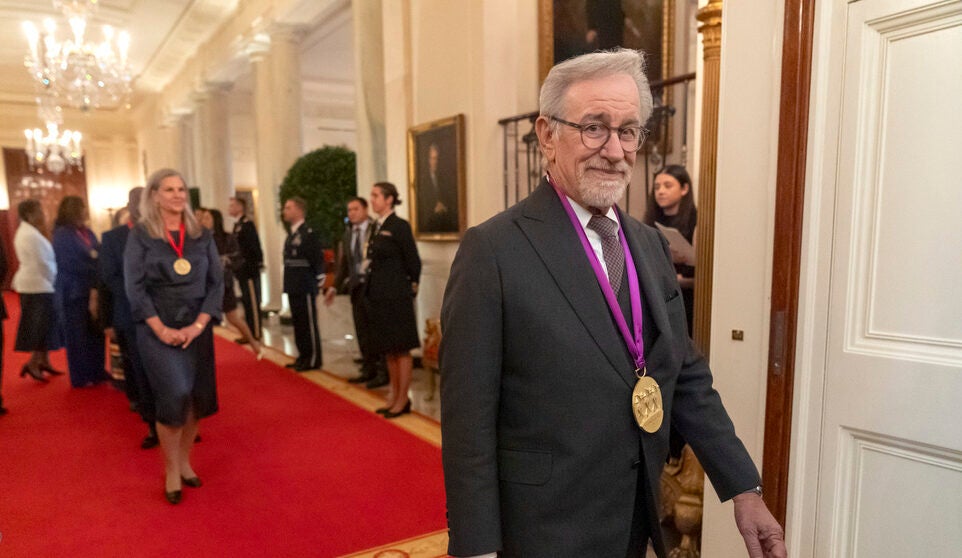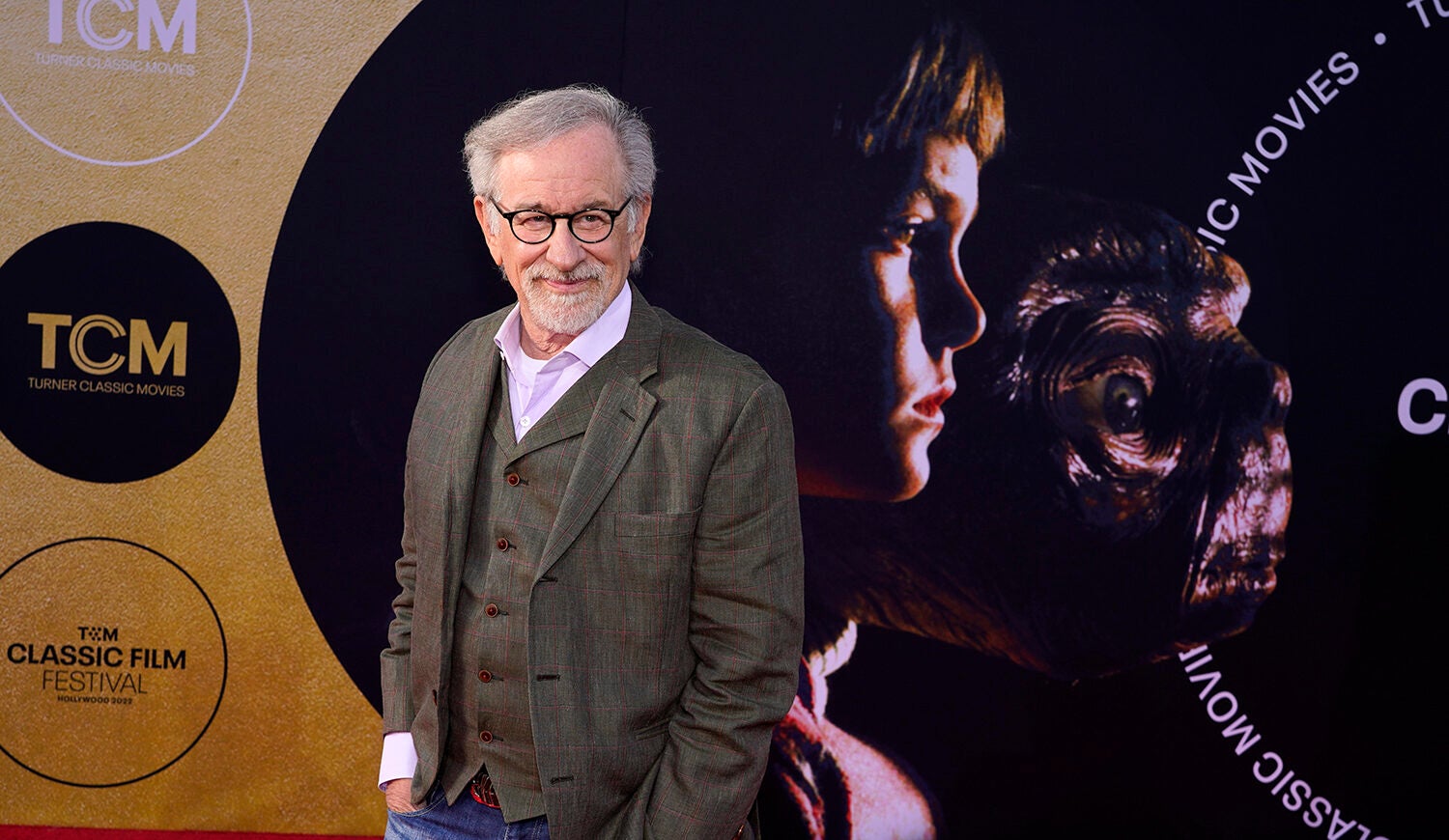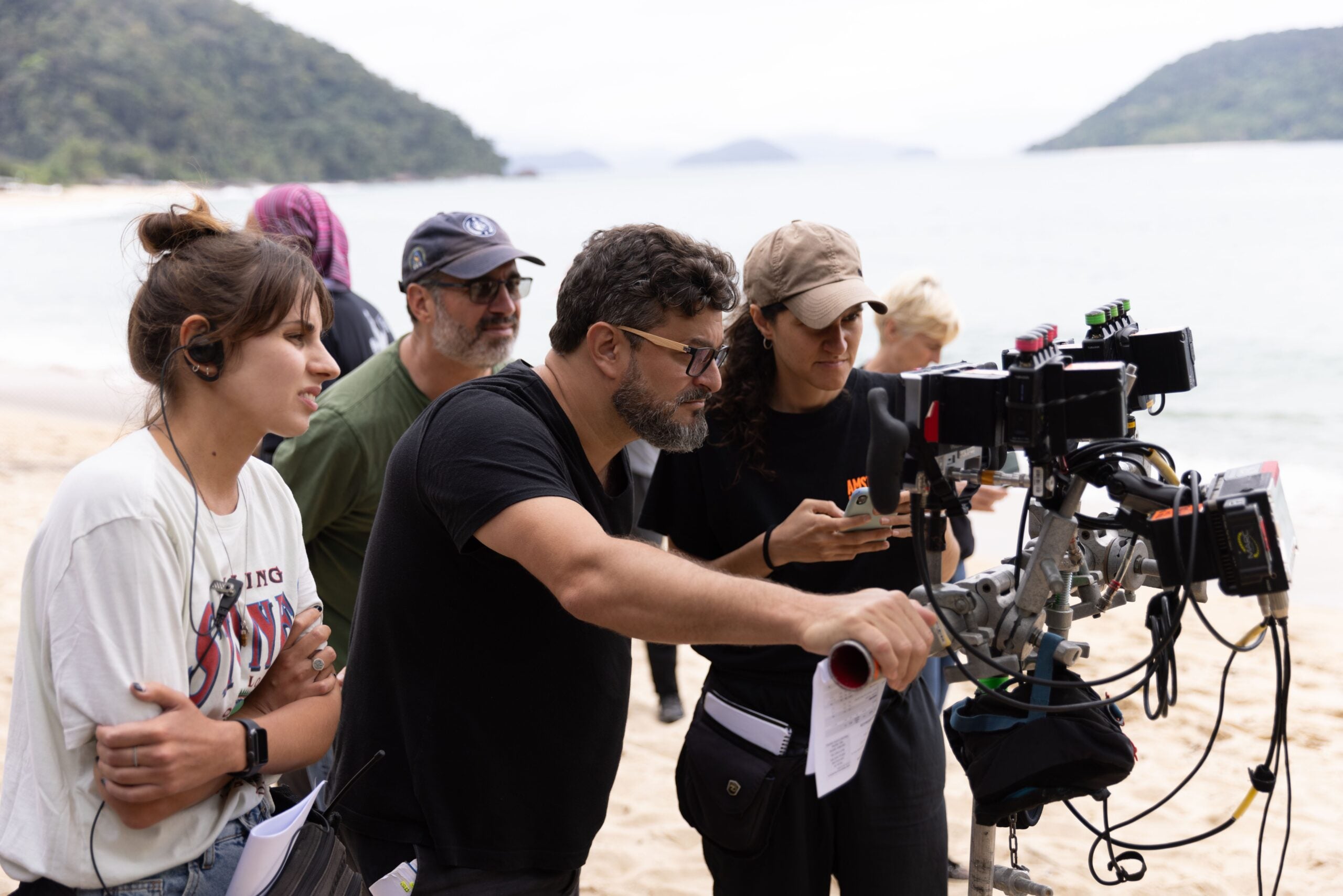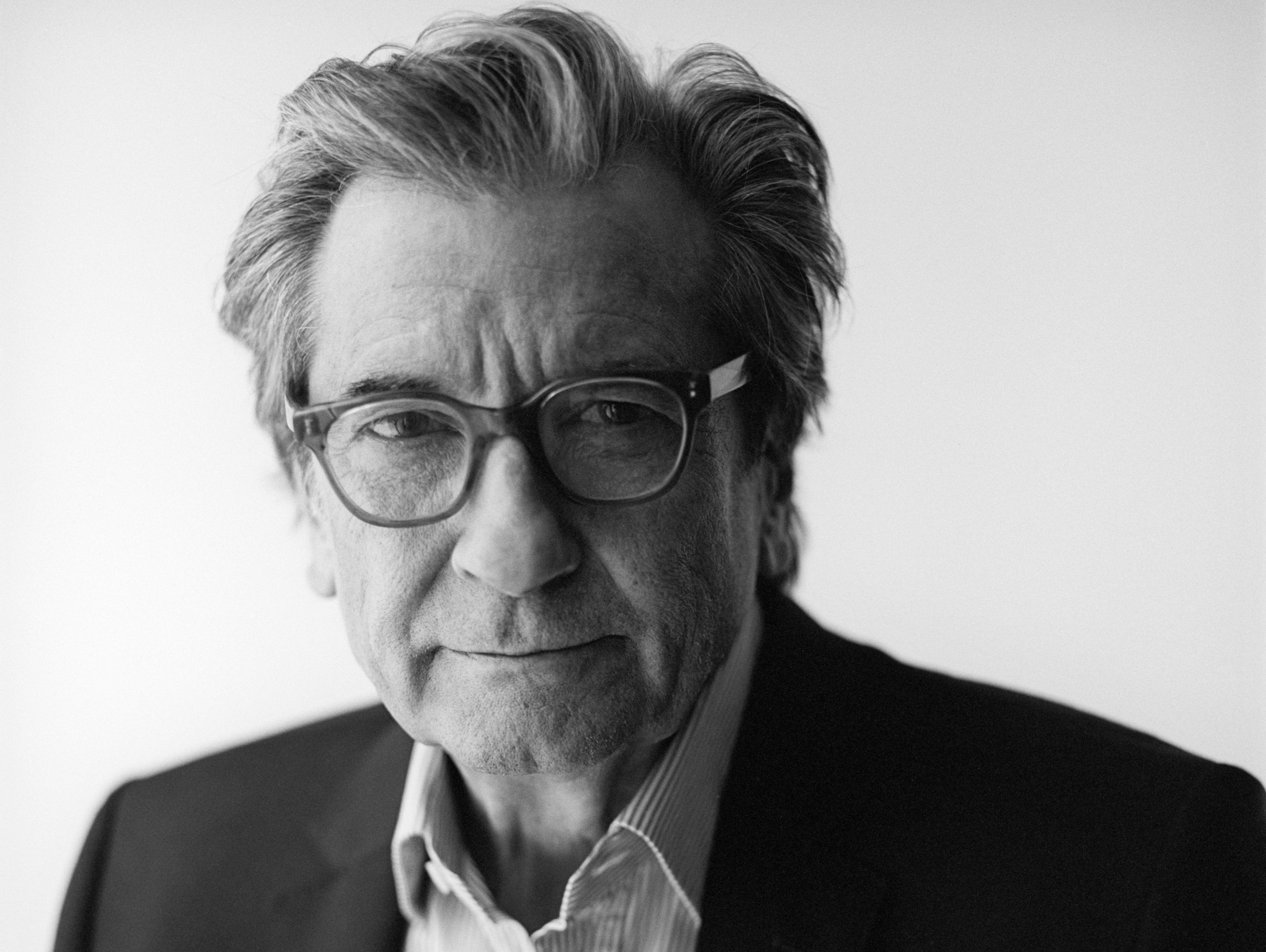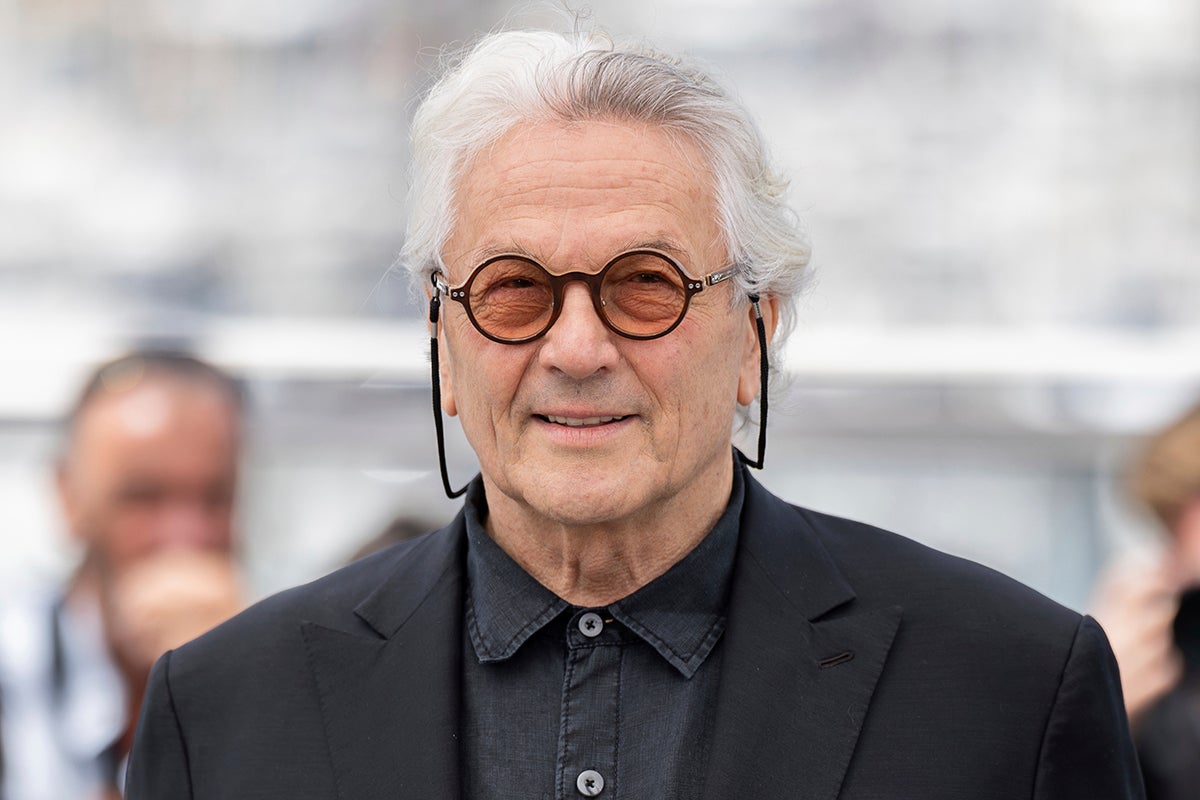Steven Spielberg has been making iconic films for over 50 years. From “Jaws” and “Jurassic Park,” to “E.T.” and “Schindler’s List,” Spielberg has provided movie-goers with some of cinema’s most memorable moments.
Film critic Ian Nathan takes a comprehensive look at the Spielberg filmography in his new book, “Steven Spielberg: The Iconic Filmmaker and his Work.”
He spoke with WPR’s “BETA” host Doug Gordon about the giant success of 1975’s summer blockbuster, “Jaws,” the groundbreaking cinematography of “Close Encounters of the Third Kind,” and Spielberg’s emotional journey during the making of “Schindler’s List.”
Stay informed on the latest news
Sign up for WPR’s email newsletter.
The following interview has been edited for clarity and brevity.
In his inability to make the film he wanted, Spielberg made the film it should be.
DG: Let’s talk about the summer blockbuster that changed the movie industry, “Jaws.” You described “Jaws” as a holy text for a generation of filmmakers. How so?
IN: Well, you talk to any of the next generation of filmmakers, and indeed, many of the peers of Spielberg. The Scorseses, the De Palmas and Coppolas. And the next generation, the likes of Ridley Scott, J.J. Abrams, Steven Soderbergh — they all return to “Jaws” as the almost quintessential example of how popular filmmaking can work in the context of it being an art form.
You can take a story which was a beach read. Peter Benchley’s book was a bestseller. It had no aspirations to literature at all. And you can transform it into an extraordinary character piece, into a parable of humanity. And at the same time, you can be so thrilling and so frightening, and so extraordinarily well-paced and made that it can be this mass form of entertainment. So it’s having it both ways, “Jaws.”
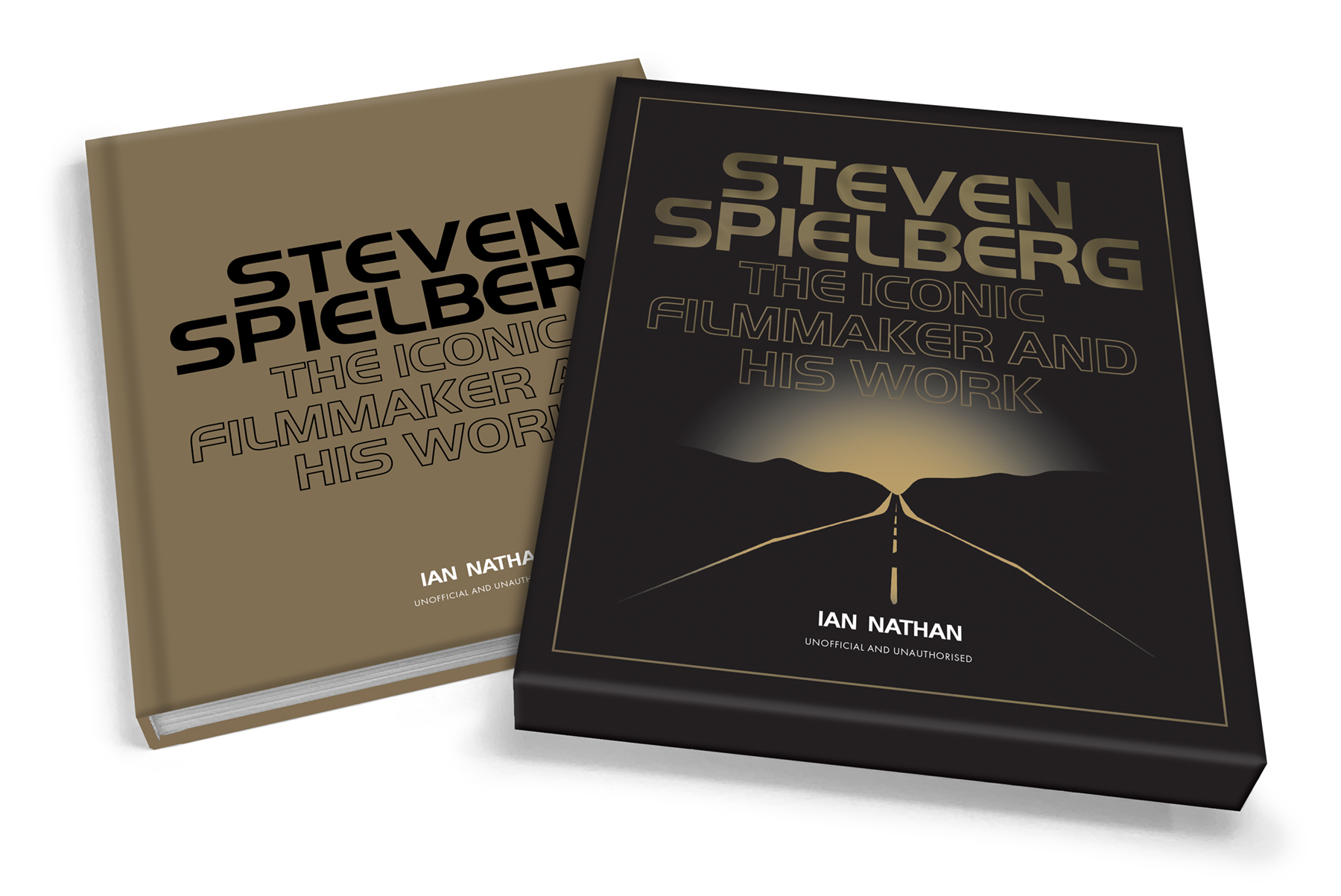
DG: What was the biggest challenge Spielberg faced in making “Jaws?”
IN: Well, it’s very well known that the robot model shark that they decided to build did not work for 80 percent of the time. Shooting a film at sea itself is a huge challenge. But also, to make a fully-sized robot great white work within the salty waters of the Nantucket is almost impossible. It was just a ridiculous scheme. In fact, there were three different versions of the model, but none of them worked. So it was just a nightmare of not being able to do the shots you needed to do per day. And this shoot dragging on and on.
So, Spielberg started to have to think, how can I make a film about a shark and not show the shark? How do I do it without revealing how bad my model is? And of course, then you watch the film and you realize you don’t want to see the shark.
In his inability to make the film he wanted, Spielberg made the film it should be. Stephen King has a great way of describing it. He says, in the world of horror, terror is the ultimate. Terror is the knock at the door. And he says, once you’ve opened the door, it’s horror. It can never be as perfect and frightening as what’s in the audience’s imagination or your reader’s imagination.
And that’s what’s going on in “Jaws.” Although we know what a shark looks like, not quite knowing what it’s like adds to it.
And the other element was, because he couldn’t shoot his shark, Spielberg had to shoot his humans. And he created these incredible human character relationships between the three men on the boat, and relied on those to drive the story. So what happens then is you make a far more sophisticated movie. You make a movie about people.
DG: The iconic line, “You’re going to need a bigger boat,” is the funniest line in the film. Who came up with that?
IN: A lot of these things become mythologized. There was a line relating to that, but I think really it’s Roy Scheider’s delivery and the way he bolts upright. and the audience is with him and he walks into the cabin. It’s the timing of all that.
It’s a brilliant perception, that you have to release the tension. You have to release it, then tighten it again. And those lovely character moments whose great lines, which are now iconic, are the perfect way of doing that.
DG: You say that “Close Encounters of the Third Kind” sets out the Spielbergian manifesto. I love that description, but can you explain it to us?
IN: Yes, “Jaws” is the defining film in the early part of his career. It made him who he is. It was an extraordinary success. And it has so many ingredients of the things you become known for. Yet actually, it’s slightly an outlier as well. It’s not totally Spielbergian.
Whereas I think “Close Encounters,” which was the film he’d been planning to make all along, it was already in pre-production. It is the ordinary man thrown into totally extraordinary circumstances. It is the far-fetched place in the humdrum. His greatest films are about fancy things, but they are always set in the reality of America. America is his grounding. It’s his subject.
And of course, it’s a film filled with yearning and possibilities and dreaming. What is driving Richard Dreyfuss forward? What is the calling of the aliens and the teasing of imagery, the god lights of heaven.
And the ultimate twist of “Close Encounters” is that you go on this sort of fraught, paranoid journey, but you end up somewhere where it’s a benign interaction. It’s a very strange film in that sense. Any normal science fiction film would be a confrontation at the end. That’s what you build towards. The invasion is coming. But in the case of “Close Encounters,” it’s connection. The sense that the universe is a good place, that these sort of angelic aliens arrive in this great theater of light.
And that, I think, comes from his optimism and his hope and that ambition to put things on a cinema screen that had never been seen. During the making of “Close Encounters,” people didn’t understand what he was driving at. The actors and the crew were like, what is this theater of light that you’re going to deliver? But once you watch the film, you understand. And that sense of the fulfillment of cinema is very Spielberg.
DG: Let’s fast forward to 1993 and talk about “Schindler’s List.” I was really intrigued by your comment that Spielberg was discovering himself through “Schindler’s List.” Can you tell us about that?
IN: Yeah, obviously he’s a Jewish boy born into a Jewish family. He knew of the Shoah. He knew of the Holocaust through his grandparents and listening to stories. But as a teenager and living in a secular family, he’d kind of put the Jewish side of his life to the side. He got bullied at school for being a Jewish kid.
And when he finally confronted “Schindler,” he had been developing the project for 10 years. And for 10 years, kept trying to make other people make it. He asked Scorsese to make it. And for a while, Scorsese was going to. Because Spielberg couldn’t face that element. It was incredibly personal to him, and he just didn’t know how personal. And when he came to make “Schindler’s List,” that whole Jewish identity was rediscovered.
He was shooting it just outside Auschwitz. They weren’t allowed to shoot in Auschwitz. He said that if he had been in Poland 40 years before, this could be where he would have ended up, you know? And I think to understand that is a very profound revelation. I don’t know how you can confront that part of history without having a personal connection to it because you can’t do it coldly.
And he was criticized for portraying the Holocaust. There was a lot of backlash toward that. But I think that’s what got him through. He said, this is for me.
DG: Because as you write, he said that the Jewish life came pouring back into his life. And I think you’re bang-on about that. Ian, what is your favorite Spielberg movie and why?
IN: I always find these kind of favorite questions very hard to answer because I’m quite greedy. I want lots of films and I want to have them all. But if I’m going to name a favorite film, I think that just does wonderful things, it’s “E.T.”
“Schindler” is the masterpiece. But I was kind of sad with “E.T.,” my notebook in hand and ready, and I was sobbing within five minutes. I was straight back to being 13 when I saw it originally. Just the beauty of how well it’s made. The performances of the three kids and the mother are just so naturalistic. At some point “E.T.” and Elliot are going to have to part. We know this, but the idea is unbearable. That’s Spielberg.

